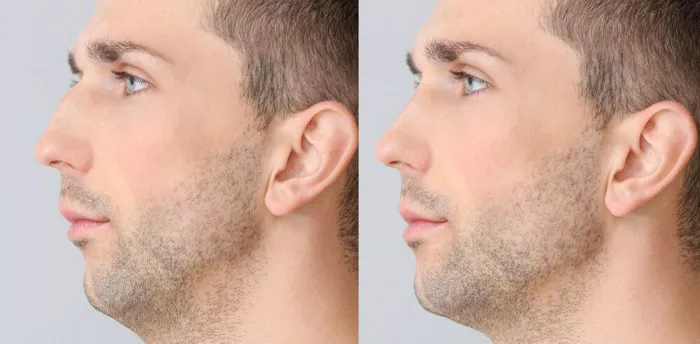Rhinoplasty, commonly known as a nose job, is a surgical procedure that involves reshaping the nose to enhance its aesthetic appearance or improve functionality. One of the pivotal decisions individuals face when considering rhinoplasty is selecting the desired nose shape. This article provides a comprehensive guide on how to choose a nose shape for rhinoplasty, exploring factors such as facial harmony, personal preferences, and communication with the surgeon. Understanding the intricacies of this decision-making process is crucial for individuals seeking a rhinoplasty that aligns with their unique features and aesthetic goals.
Facial Harmony: The Foundation of Nose Shape Selection
Facial harmony is a fundamental consideration when choosing a nose shape for rhinoplasty. The nose is a central feature of the face, and its proportions significantly impact overall facial aesthetics. A harmonious nose shape complements other facial features, creating a balanced and natural appearance. Surgeons often assess the individual’s facial structure, including the forehead, eyes, cheeks, and chin, to recommend a nose shape that enhances overall symmetry. Striking the right balance between facial features ensures that the rhinoplasty results appear cohesive and harmonize with the individual’s unique beauty.
Personal Preferences: Tailoring the Nose to Individual Desires
While facial harmony provides a guiding principle, personal preferences play a crucial role in the decision-making process. Individuals seeking rhinoplasty often have specific ideas about the nose shape they find aesthetically pleasing. These preferences may be influenced by cultural ideals, personal style, or features admired in others. Communicating these preferences with the surgeon is essential for aligning the rhinoplasty goals with the individual’s vision. Open and transparent discussions about desired changes, along with realistic expectations, enable the surgeon to tailor the procedure to meet the individual’s aesthetic aspirations.
Understanding Nose Shape Variations: Aesthetic Options for Rhinoplasty
Nose shapes come in various forms, each with its unique characteristics. Common nose shape variations include the straight nose, concave or button nose, convex or Roman nose, and upturned or downturned noses. The choice of nose shape can be influenced by cultural considerations, trends, and individual preferences. Some individuals may seek subtle changes to refine the existing shape, while others may desire more dramatic transformations. Understanding the spectrum of nose shape variations allows individuals to explore options and make informed decisions that align with their aesthetic goals.
Consultation with a Qualified Surgeon: Expert Guidance for Informed Choices
A pivotal step in the process of choosing a nose shape for rhinoplasty is consulting with a qualified and experienced surgeon. Surgeons specializing in rhinoplasty possess the expertise to assess facial features, discuss individual preferences, and provide valuable insights into suitable nose shapes. During the consultation, surgeons use advanced imaging technology to simulate potential outcomes, allowing individuals to visualize the proposed changes. This interactive process fosters open communication, ensuring that the surgeon understands the individual’s goals and can provide expert guidance on achieving the desired nose shape while maintaining facial harmony.
Functional Considerations: Balancing Aesthetics with Nasal Functionality
While aesthetics often take center stage in rhinoplasty discussions, it’s crucial to balance cosmetic goals with nasal functionality. The nose serves essential functions such as breathing and filtering air. Surgeons assess the nasal structure to ensure that any cosmetic changes do not compromise functionality. In some cases, individuals may seek rhinoplasty to address both aesthetic concerns and functional issues, such as a deviated septum. The integration of functional considerations into the decision-making process ensures that the chosen nose shape not only enhances appearance but also preserves or improves nasal function.
Realistic Expectations: Setting Achievable Goals for Rhinoplasty Outcomes
Setting realistic expectations is a key component of the decision-making process in rhinoplasty. While the procedure can achieve transformative results, it’s essential to understand the limitations and possibilities. Surgeons work closely with individuals to establish achievable goals based on the existing facial anatomy and the chosen nose shape. Realistic expectations contribute to overall satisfaction with the rhinoplasty outcomes, fostering a positive experience and enhancing the individual’s confidence in their newly shaped nose.
Virtual Simulations: Visualizing Potential Outcomes
Advancements in technology have introduced virtual simulations as a valuable tool in the rhinoplasty decision-making process. Surgeons use computer-generated imaging to create simulations of potential rhinoplasty outcomes based on the chosen nose shape. This allows individuals to visualize how the proposed changes will look on their own face, aiding in the decision-making process. Virtual simulations facilitate a collaborative approach between the surgeon and the individual, ensuring that both parties have a clear understanding of the aesthetic goals and expectations for the rhinoplasty.
Consideration of Age and Aging: Choosing a Timeless Nose Shape
Age is a relevant consideration when choosing a nose shape for rhinoplasty. While individuals of all ages seek rhinoplasty, it’s important to select a nose shape that complements the overall facial aesthetics at different life stages. Surgeons take into account factors such as skin elasticity, bone structure, and the aging process when recommending nose shapes. Choosing a nose shape that is timeless and harmonizes with the individual’s features across various life stages ensures enduring satisfaction with the rhinoplasty results.
Conclusion
In conclusion, the decision on how to choose a nose shape for rhinoplasty is a deeply personal and empowering journey. Facial harmony, personal preferences, cultural considerations, and functional aspects all contribute to the complexity of this decision. Consulting with a qualified surgeon, leveraging virtual simulations, and maintaining realistic expectations are crucial steps in navigating the aesthetic choices associated with rhinoplasty. The transformative potential of rhinoplasty lies in the collaboration between individuals and skilled surgeons, ensuring that the chosen nose shape enhances facial aesthetics while preserving individual identity and cultural nuances. As individuals embark on the path to rhinoplasty, the thoughtful consideration of these factors fosters a positive experience, leading to a harmonious and satisfying outcome.

